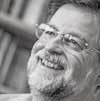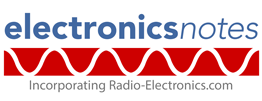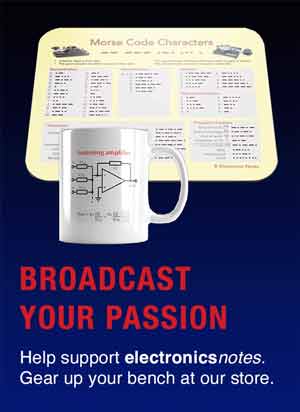Circuit Symbols for Wires, Cables, Switches, Connectors
Circuit symbols for the mechanical items found on all circuits: wires, cables, switches, connectors, etc. . .
Ciircuits, Diagrams & Symbols Includes:
Circuit symbols overview
Resistors
Capacitors
Inductors, coils, chokes & transformers
Diodes
Bipolar transistors
Field effect transistors
Wires, switches & connectors
Analogue & functional circuit blocks
Logic
The more mechanical items like wires, cable, conenctors and switches also require circuit symbols. Although, in some respects they do not always contribute to the circuit operation in the same way as resistors, capacitors and active devices, they are nevertheless equally important and ahve their circuit symbols.
There is a wide variety of circuit symbols for wires, cables, switches and connectors, indicating the wide variety of options that are available.
| Circuit symbols |
|
|---|---|
| Item Type | Circuit Symbol |
| Wires crossing but not joined |  |
| Wires crossing but not joined Often used on older circuits to clarify wires are not joined. |
 |
| Wire junction Note the dot at the junction. |
 |
| Two wire junction Double junction symbol often used for joined crossing wires to remove possiblity of confusion. |
 |
| Wires crossing & joined To avoid confusion with unjoined wires it is normally best practice to use the symbol for the double junction. |
 |
| Coaxial cable / feeder |  |
| Test point |  |
| Terminal Typically at the edge of a board, circuit, etc. |
 |
| Switch SPST |  |
| Switch SPST normally closed |  |
| Switch SPST push button / momentary action |  |
| Switch DPST |  |
| Switch SPDT |  |
| Switch single pole 4 way |  |
Note: abbreviations for switches include:
SPST: Single pole single throw
DPST: Double pole, single throw
SPDT: Single pole, double throw
DPDT: Double pole, double throw
The number of "throws" equates to the number of active positions on the switch. The term throw is normally only used for single and double throw switches, after that the terminology refers to 4 way or 8 way switches, etc.. The number of poles equates to the number of circuits that are switched, i.e. the number of sections within the switch.
 Written by Ian Poole .
Written by Ian Poole .
Experienced electronics engineer and author.
More Circuits & Circuit Design:
Op Amp basics
Op Amp circuits
Power supply circuits
Transistor design
Transistor Darlington
Transistor circuits
FET circuits
Circuit symbols
Return to Circuit Design menu . . .



